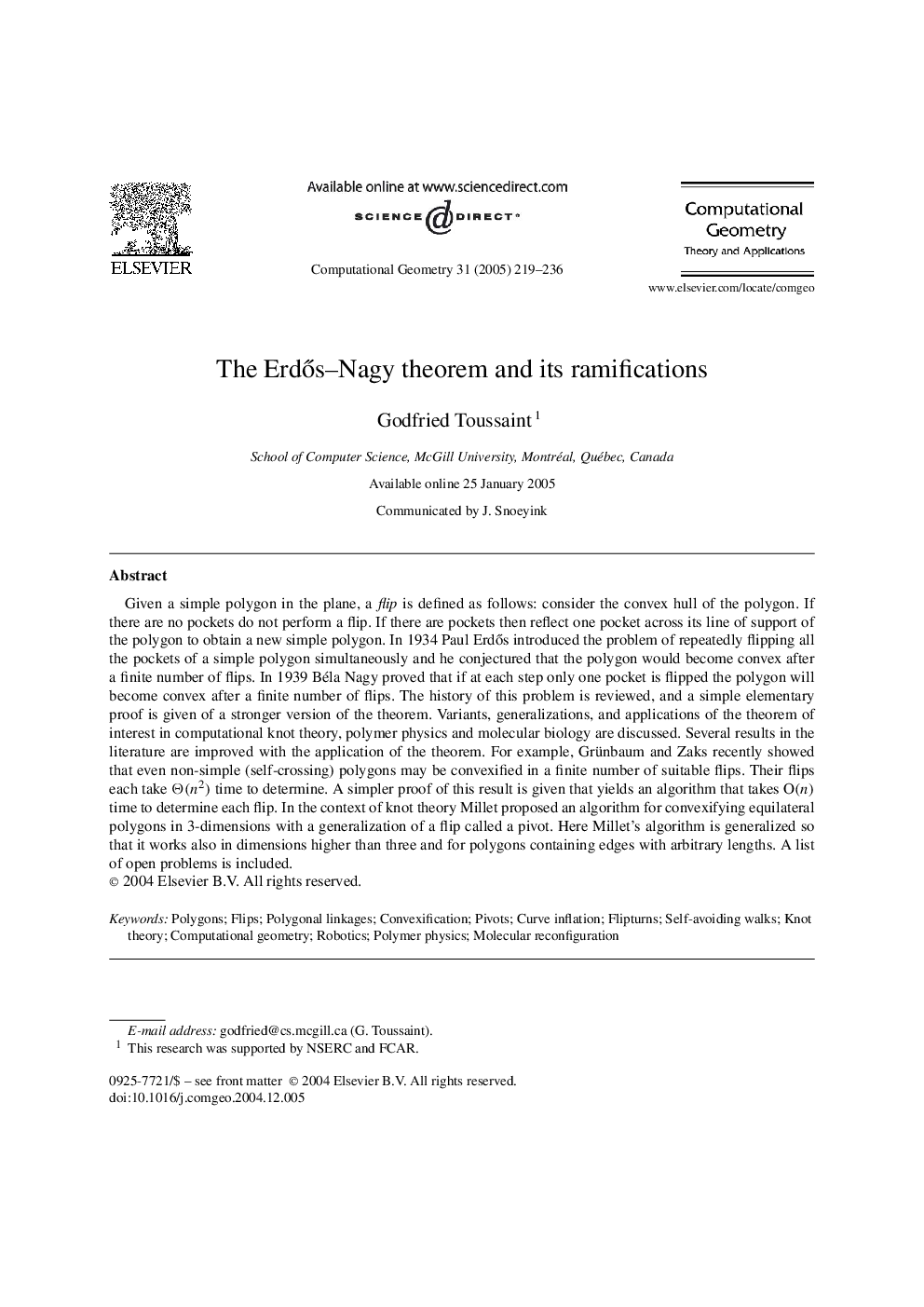| کد مقاله | کد نشریه | سال انتشار | مقاله انگلیسی | نسخه تمام متن |
|---|---|---|---|---|
| 10327308 | 680970 | 2005 | 18 صفحه PDF | دانلود رایگان |
عنوان انگلیسی مقاله ISI
The ErdÅs-Nagy theorem and its ramifications
دانلود مقاله + سفارش ترجمه
دانلود مقاله ISI انگلیسی
رایگان برای ایرانیان
کلمات کلیدی
موضوعات مرتبط
مهندسی و علوم پایه
مهندسی کامپیوتر
نظریه محاسباتی و ریاضیات
پیش نمایش صفحه اول مقاله

چکیده انگلیسی
Given a simple polygon in the plane, a flip is defined as follows: consider the convex hull of the polygon. If there are no pockets do not perform a flip. If there are pockets then reflect one pocket across its line of support of the polygon to obtain a new simple polygon. In 1934 Paul ErdÅs introduced the problem of repeatedly flipping all the pockets of a simple polygon simultaneously and he conjectured that the polygon would become convex after a finite number of flips. In 1939 Béla Nagy proved that if at each step only one pocket is flipped the polygon will become convex after a finite number of flips. The history of this problem is reviewed, and a simple elementary proof is given of a stronger version of the theorem. Variants, generalizations, and applications of the theorem of interest in computational knot theory, polymer physics and molecular biology are discussed. Several results in the literature are improved with the application of the theorem. For example, Grünbaum and Zaks recently showed that even non-simple (self-crossing) polygons may be convexified in a finite number of suitable flips. Their flips each take Î(n2) time to determine. A simpler proof of this result is given that yields an algorithm that takes O(n) time to determine each flip. In the context of knot theory Millet proposed an algorithm for convexifying equilateral polygons in 3-dimensions with a generalization of a flip called a pivot. Here Millet's algorithm is generalized so that it works also in dimensions higher than three and for polygons containing edges with arbitrary lengths. A list of open problems is included.
ناشر
Database: Elsevier - ScienceDirect (ساینس دایرکت)
Journal: Computational Geometry - Volume 31, Issue 3, June 2005, Pages 219-236
Journal: Computational Geometry - Volume 31, Issue 3, June 2005, Pages 219-236
نویسندگان
Godfried Toussaint,